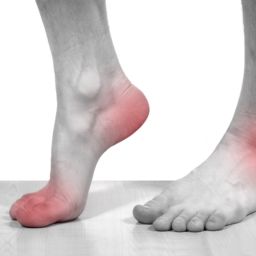
The athletic patient, whether recreational or elite, may suffer from injury or disease of their lower extremities, yet few remain as frustrating and elusive as chronic induced compartment syndrome. Oftentimes, X-rays or even MRIs can be inconclusive.
Studies have shown that there is an approximately 22 month delay in proper diagnosis. For anybody that is athletic, or has dealt with athletes before, know that 22 months can be a grueling amount of time to both be in pain and not be able to participate in their desired physical activities.
In order for a provider to properly diagnose exercise-induced compartment syndrome (EICS), all other possible diagnoses must be ruled out. This includes muscle herniation, adductor canal outlet syndrome, medial tibial stress syndrome, popliteal artery entrapment syndrome, low lying muscle belly, Baker’s cyst or stress fracture, to name a few.
What is exercise-induced compartment syndrome?
EICS is a chronic, nagging, and debilitating condition. The hallmark of the disease is effort induced tissue pressures within a certain osteo fascial envelope of the leg being elevated well above physiologic levels. This often results in compression of the neurovascular bundles and leads to inadequate perfusion, ischemic, and even neurologic related symptoms. As a matter of fact, studies have indicated that nerve damage with EICS can begin as early as 4 hours of increased pressure.
What does one feel when suffering from EICS?
Patients usually describe a very specific distance, time spent exercising, or a certain level of intensity of exercise that provokes the pain. It typically begins with an aching gnawing sensation, that eventually progresses to muscle fullness and tightness and finally, numbness and weakness of the affected area. Muscle tenderness can frequently be felt in the middle of the muscle itself.
How can my podiatrist accurately and quickly diagnose EICS?
It is important to have a high index of clinical suspicion. Preliminary procedures involving a blood pressure cuff of the affected leg can be used, however, the gold standard in arriving at a timely diagnosis will consist of using a little device called a wick, or a slit catheter, which is used to measure intracompartmental pressures.
How can an athlete get better from EICS?
Alternating activities and exercises, orthotics, nonsteroidal anti-inflammatory drugs, and immobilization or cessation of activity can be attempted conservatively for up to 6-8 weeks. However, in the competitive and elite athlete, surgical intervention by fasciotomy is often initially pursued.
What is a fasciotomy?
A fasciotomy is an incision in the osteo fascial envelope that separates the muscle bellies and tendons and helps secure them in place to the bones in which they attach. This in turn, frees up the harmful pressures of the chronically distended and engorged muscles.
Fasciotomy is the gold standard according to the medical literature and can be performed in several ways.
- In an open fasciotomy visualization of the affected compartment is readily accessible.
- Subcutaneous endoscopic fasciotomies which work using smaller incisions, with incomplete visualization of the affected structures
- Lastly you have endoscopic fasciotomies, in which a very small incision and a tiny camera is used to both orient and identify the surgeon to locate the fascia and to cut it with an arthroscopic knife.
What is the success rate of the surgery?
The medical literature supports symptomatic relief in the anterior and lateral compartments of the leg showing between 80-100% relief.
What does the recovery time look like?
Patients should elevate the extremity for the first two-three days to prevent excessive edema. Non Weight Bearing is then advised for two weeks. By four weeks, postoperatively patients may transition into a regular shoe and resume their normal daily activities. Some elite athletes may return to their training regimens as soon as eight-ten weeks after surgery if tolerated.
Want to know more about EICS? Give us a call and we’d be happy to further discuss.
By Dr. Felipe Peterson D.P.M.



